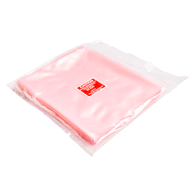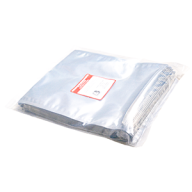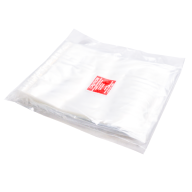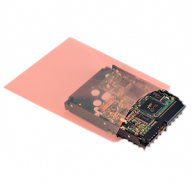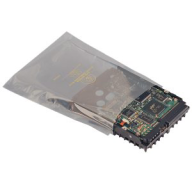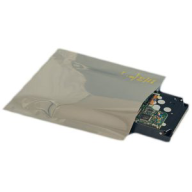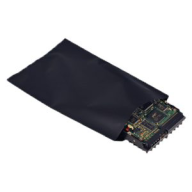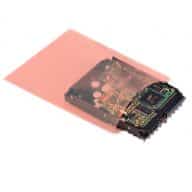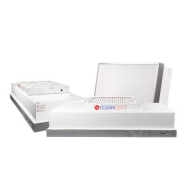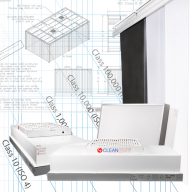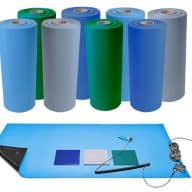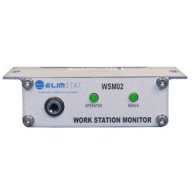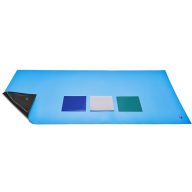Since clothing is usually electrically insulated or isolated from the body, charges on clothing fabrics are not necessarily dissipated to the skin and then to ground. ESD jackets and lab coats offer protection from electrostatic fields generated by clothing on the user’s body. ESD garments are worn whenever static damage is a concern.
ESD jackets differ from common work garments because they contain a grid of conductive fibers embedded throughout the garment. The grid creates a “Faraday Cage” effect around the body of the operator, that shields charges generated from the operator’s clothing that could damage devices that are sensitive to static electricity.
ANSI / ESD S20.20 Garment Categories
Per ANSI/ESD S20.20 and the Garment standard ANSI/ESD STM2.1, there are three categories of ESD garments:
ESD Category 1: A static control garment which it not being attached to ground. However, without grounding, a charge may accumulate on conductive or dissipative elements of a garment, if present, resulting in a charged source.
ESD Category 2: A groundable static control garment, when connected to ground, provides a higher level of suppression of the effects of an electric field from clothing worn underneath the garment.
ESD Category 3: A groundable static control garment system also bonds the skin of the person to an identified ground path. The total system resistance including the person, garment and grounding cord shall be less than 35 megohms.
The static controlling efficiencies of these garments will be determined by two factors: the composition of the fabric and whether there is additional grounding applied.
What Are ESD Garments Made of?
At Bennett & Bennett, our jackets and lab coats are made with a combination of carbon and polyester fabric or a cotton-polyester blend. Commonly, the fabrics are described with a percentage.

For example, our 8812 series of garments is comprised of 88% polyester and 12% carbon. We also feature a more robust series of polyester garments known as our 8900 series, and our 5049 premium series, comprised of a cotton and polyester blend. Your choice of fabric will be determined by the level of operator comfort and required ESD performance.
The amount of carbon fiber in the fabric is important to note because this is the element that dictates the ESD performance. The greater the amount of carbon, the better the anti-static performance.
Do ESD Garments Need to be Grounded?
All three of the ANSI/ESD categories may suppress or otherwise affect an electric field from clothing worn underneath the garment without being attached to the ground. However, without grounding, a charge may accumulate on a garment, and result in a charged source. Therefore, we recommend that additional wrist straps and grounding cords be applied to a common point ground source for total effectiveness.
Many of our series of garments are available with a knitted cuff option. In addition to the cuff itself fitting more snugly against the operator’s skin, this option incorporates our “hands-free” grounding feature which allows for
implementation of a wrist strap and grounding cord, but no tugging at the operator’s wrist, and no cord to get in the operator’s way.
The wrist strap worn by the operator is connected to a snap inside the left cuff of the garment. A carbon-infused seam runs up the sleeve and down the side toward the hip, where a 4mm snap stud on the hip pocket provides a secure and direct electrical connection to a ground cord attached to a common point ground. The smock will quickly and effectively ground the person when used in this manner.




